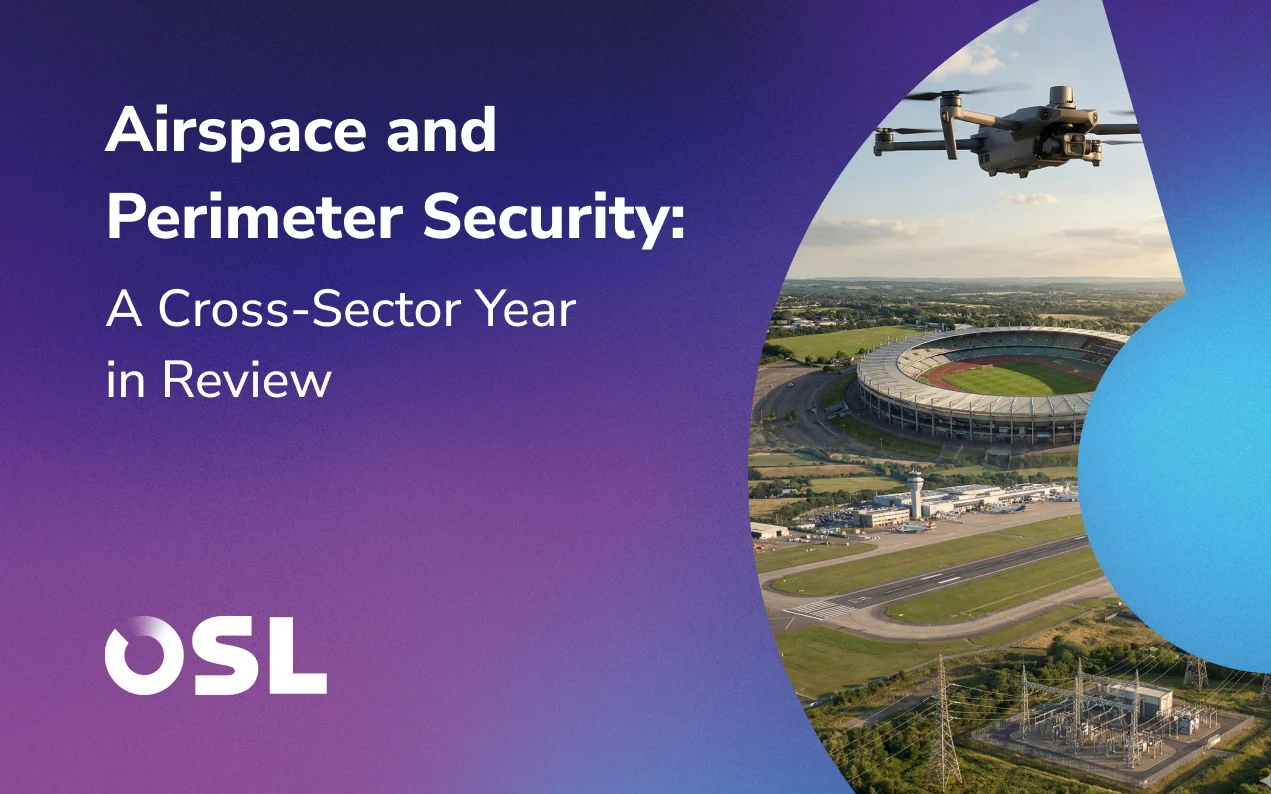The 6‑Month Mistake: Why CUAS Systems Should Be Deployed Before the Threat Peaks


CUAS systems at airports, energy sites, and military bases are often deployed only after a close call, confirmed drone incident, or surge in local drone activity. While this is an understandable response, it introduces a critical vulnerability: a window of exposure that can last six months or more.
That interval used for threat assessments, internal approvals, budget allocation, vendor evaluation, and system integration is far from passive. In high-risk environments, it may be the most dangerous phase. If Drone defence system deployment is delayed during this period, it leaves the site open to repeat incursions, often by adversaries returning with improved capabilities.
A Predictable Gap and Risk
Drone intrusions are seldom one-off events. Initial sightings tend to be reconnaissance. A drone seen today might revisit tomorrow to probe response latency, sensor blind spots, or operational routines. Many organisations delay CUAS procurement until after that first sighting. By this time, attackers may have already exploited vulnerabilities multiple times.
This timing discrepancy is further compounded when procurement is brought to light. In the public or regulated space, vendor briefings, tendering processes, and subcontractor outreach create signals that defence is coming but not yet active, essentially broadcasting a vulnerability. Opportunistic players monitor these signals and might attack at exactly this time frame because the system is offline.
Procurement Is Still Catching Up
Despite growing awareness, many organisations remain ill-prepared. They lack pre-approved vendor frameworks, standardised architectures, or internal policies that define "fit-for-purpose CUAS deployment." This is especially prevalent outside defence circles, where CUAS is a new domain and teams may lack technical or policy expertise.
Some organisations go for the cheapest option, trying to save money while they explore options. Others stall completely, waiting for regulation or industry leadership. Both add risk, and drone risk is time-sensitive. A 2023 report by the UK government said we need to "actively prepare for the possibility of war on the homeland," and we need to protect our infrastructure and national assets from asymmetric threats. Although they didn't mention their known role in surveillance, disruption, and hybrid warfare, they are a key concern
It's not just Europe. New Zealand's Civil Aviation Authority reported a 6-year high in drone incidents, and now there's a focus on airspace violations and UAVs being used for illegal surveillance. From controlled airports to private centres, activity is outpacing preparedness.
Case Study: The Missed Window at Gatwick Airport
Let's understand this with the help of a real incident. Back in December 2018, a drone entered Gatwick Airport's airspace. Flights were grounded, passengers were stranded, and the need for CUAS investment became urgent. Authorities brought in the military and began reviewing long-term solutions. But full deployment took time.
Since the new systems were still in planning and testing, a second drone appeared in April 2019. This time, it forced another temporary shutdown. Flights were diverted again. And once more, the headlines followed.
The delays drew sharp criticism. Security experts later acknowledged that a complete solution, deployed earlier, could have helped prevent the second disruption.
Meanwhile, other airports facing similar threats began installing CUAS protections immediately. Those that acted early were able to maintain operations during similar incursions.
One thing is clear: The difference wasn't the threat; it was how fast sites moved to address it.
Field Readiness Starts Before Deployment
Readiness is not measured by what's in procurement. It is defined by what is installed, trained, and operationally integrated. CUAS solutions are only effective when site teams know how to use them under real-world conditions. That means ensuring sensor coverage is mapped, escalation protocols are rehearsed, and alerts are tied into broader security workflows.
These needs are particularly urgent in sectors like airports and critical national infrastructure, where a single misclassification or delay in response can trigger large-scale disruption or public safety concerns. CUAS deployments in these environments are not plug-and-play; they must be embedded, tested, and adjusted to fit operational complexity.
Delaying deployment means deferring that critical rehearsal time. A system installed under pressure, or without sufficient time for tuning and training, often underperforms in its early stages, not because the technology is flawed, but because the team hasn't had time to operationalise it.
Even Partial Deployment Cuts Down Exposure
Proactive deployment doesn't require a finished solution. Even a minimal setup, covering a subset of zones or beginning with basic RF detection, can meaningfully reduce risk. Detection alone can deter low-effort incursions. More importantly, it gives operational teams time to learn and adjust, rather than react under pressure.
Deploying early also sends a message. A site with visible or credible defences is harder to target, even if the system isn't yet at full maturity. It shifts posture from reactive to preventative, something that has growing importance in the face of faster, cheaper, and more autonomous drone threats.
While no single deployment eliminates all risk, even a partial implementation provides a foundation for layering in more capabilities later. That flexibility is crucial when the alternative is starting from zero under urgent conditions.
Timing Is a Strategic Decision
In the realm of security, timing is as critical as technology. The six-month lag between initial alarm and operational readiness is not a harmless delay; it is a known vulnerability. It is the period when risk is rising, visibility is high, and response capabilities are still on paper.
CUAS deployment should not follow the impact. It should anticipate it. Organisations that move early are not just investing in capability, they're buying time. Time to rehearse. Time to tune. Time to make mistakes in a safe environment. Those who wait risk managing fallout. Those who act early shape outcomes.
FAQs
1. Can a partial CUAS deployment make a meaningful difference?
Absolutely. Even basic detection capabilities help identify low-effort incursions and give teams time to train and adapt. A phased rollout is far better than waiting for a complete system under pressure.
2. How can organisations accelerate CUAS readiness without cutting corners?
By adopting modular CUAS systems with pre-configured settings, building out incident response plans in parallel, and prioritising staff training even before hardware is fully installed. Establishing fast-track procurement channels and pre-vetted vendor pools can also reduce red tape. The key is treating readiness as an ongoing posture, not a single procurement event.
3. What factors commonly delay CUAS deployments, even after an incident has occurred?
Delays often stem from fragmented procurement processes, lack of internal CUAS policy frameworks, unclear ownership between departments, or overdependence on external threat validation. Sometimes, budget approvals require cross-departmental signoff or legal review, causing weeks or months of stagnation, during which time threat actors may reappear with enhanced tactics.
4. How does early deployment influence overall CUAS performance in real-world scenarios?
Early deployment allows for tuning sensors, training teams, integrating alerts with broader security systems, and identifying blind spots in advance. As a result, by the time actual threats emerge, the system operates at higher effectiveness, not just because the technology is mature, but because the human and process elements have been stress-tested in lower-stakes conditions.
5. What should an effective CUAS deployment strategy include for high-risk environments?
An effective CUAS deployment strategy should go beyond hardware acquisition. It must start with early threat modeling, pre-incident detection planning, and integration into existing security workflows. Key elements include:
- Phased deployment: Starting with RF detection or visual tracking before scaling to mitigation.
- Operational readiness: Ensuring teams are trained and protocols rehearsed before the system goes live.
- Policy alignment: Working within legal frameworks, especially near airports or critical infrastructure.
- Red team testing: Simulating incursions to fine-tune detection thresholds and response times.
Editor's Pick
Secure your airspace with adaptive drone defence solutions
Ensure operational safety with multi-layered solutions designed to counter unauthorised drones and protect complex environments.




